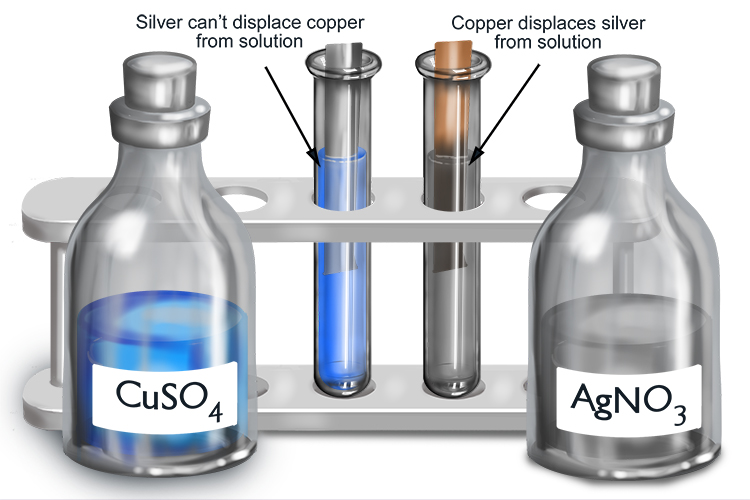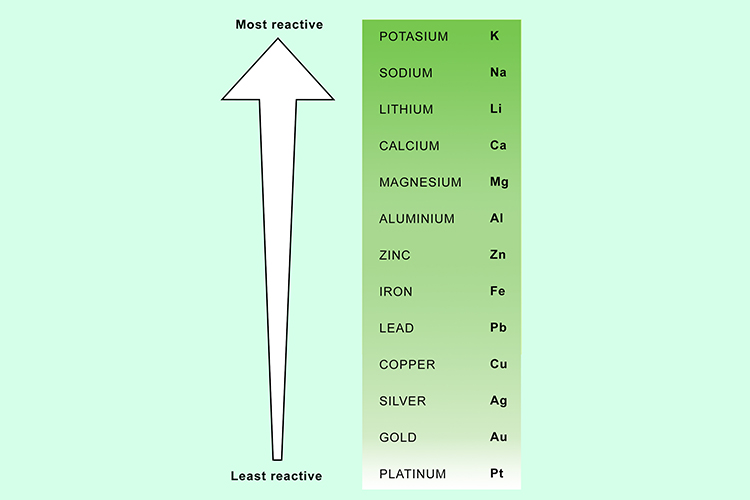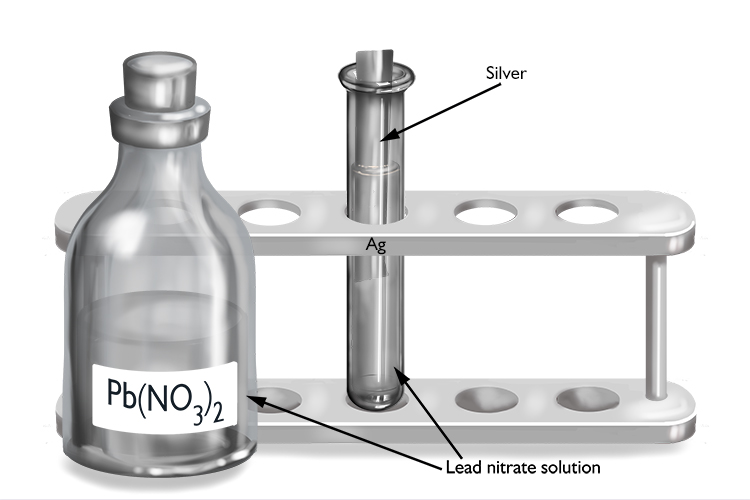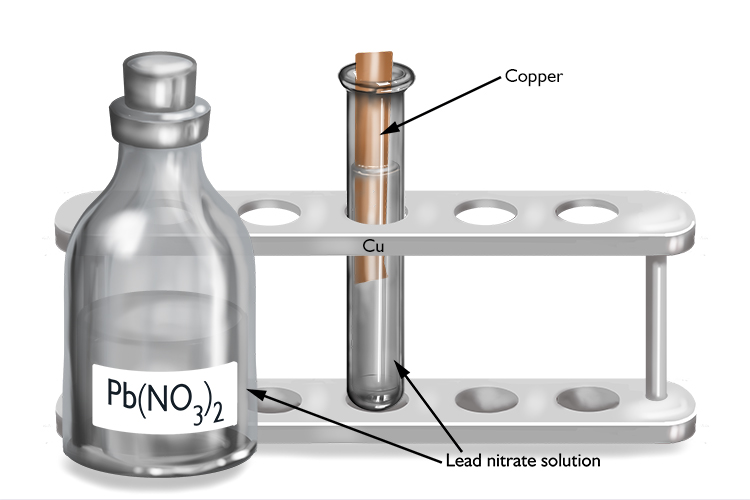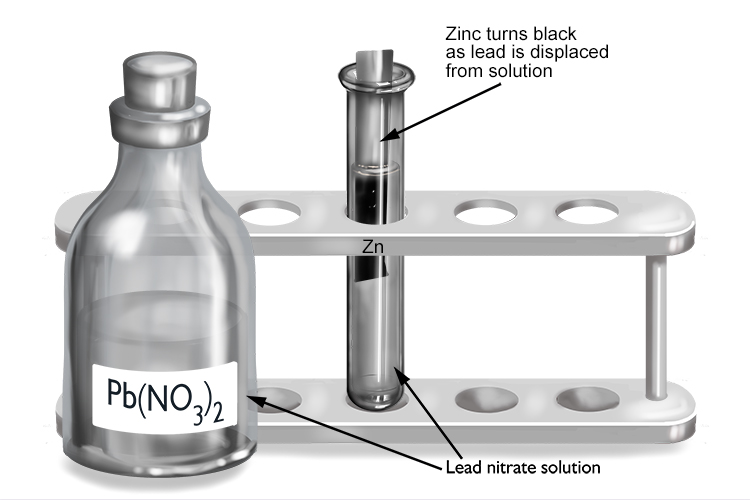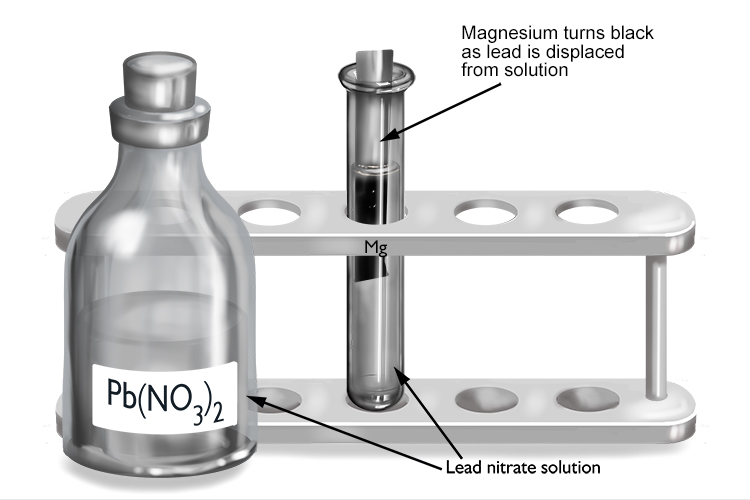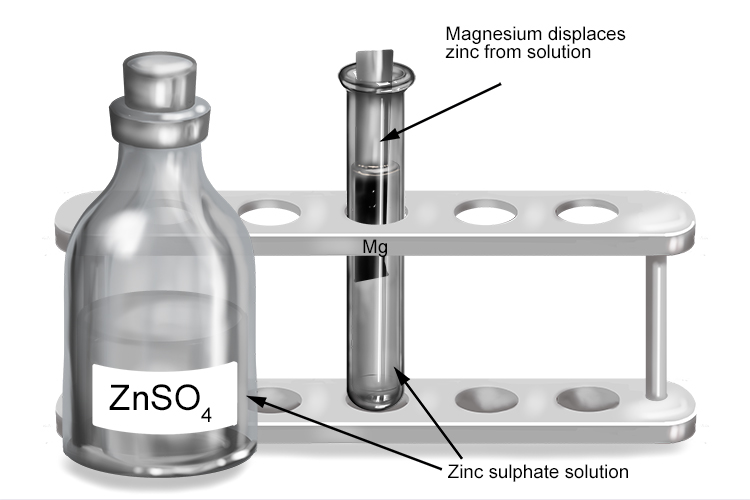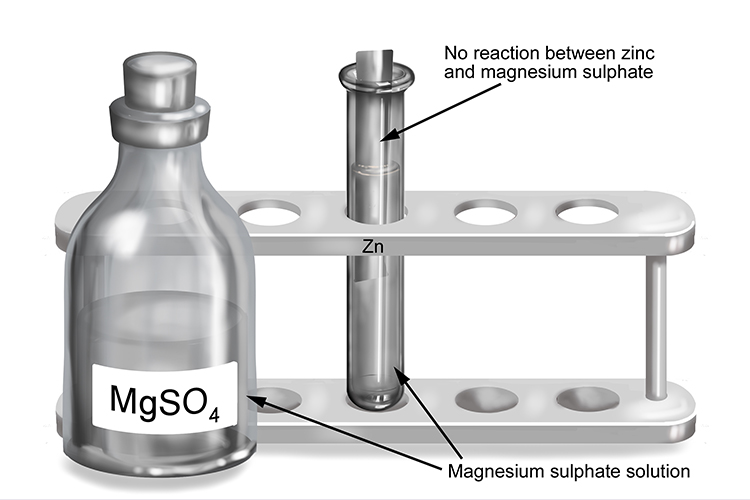|
Displacement from solution
If a metal and metal solution react, the more reactive metal will displace the less reactive metal from solution.
If the metal in solution you start with is formed from a more reactive metal than the metal to be added, no reaction will occur. You can now predict which metal will win by using the reactivity series of metals. Note: This can be used as an alternative method of testing to put the reactivity series in the correct order.
Zinc nitrate
+
Lead
→
No reaction
But
Lead nitrate
+
Zinc
→
Zinc nitrate
+
Lead
Magnesium nitrate
+
Lead
→
No reaction
But
Lead nitrate
+
Magnesium
→
Magnesium nitrate
+
Lead
Lead nitrate
+
Silver
→
No reaction
As no reaction occurs, lead must be more reactive than silver.
Lead nitrate
+
Copper
→
No reaction
As no reaction occurs, lead must be more reactive than copper.
Lead nitrate
+
Zinc
→
Zinc nitrate
+
Lead
The zinc displaces the lead from solution to form zinc nitrate, so zinc must be more reactive than lead.
The zinc turns black as it becomes coated in a layer of lead that’s been displaced from the lead nitrate solution. Lead nitrate and magnesium
Lead nitrate
+
Magnesium
→
Magnesium nitrate
+
Lead
The magnesium displaces the lead from solution to form magnesium nitrate, so magnesium must be more reactive than lead.
The magnesium turns black as it becomes coated in a layer of lead that’s been displaced from the lead nitrate solution. Zinc sulphate and magnesium
Zinc sulphate
+
Magnesium
→
Magnesium sulphate
+
Zinc
The more reactive magnesium displaces the less reactive zinc from the solution to form magnesium sulphate. Magnesium sulphate and zinc
Magnesium sulphate
+
Zinc
→
No reaction
The less reactive zinc will not react with the solution which contains the more reactive magnesium. (责任编辑:) |

